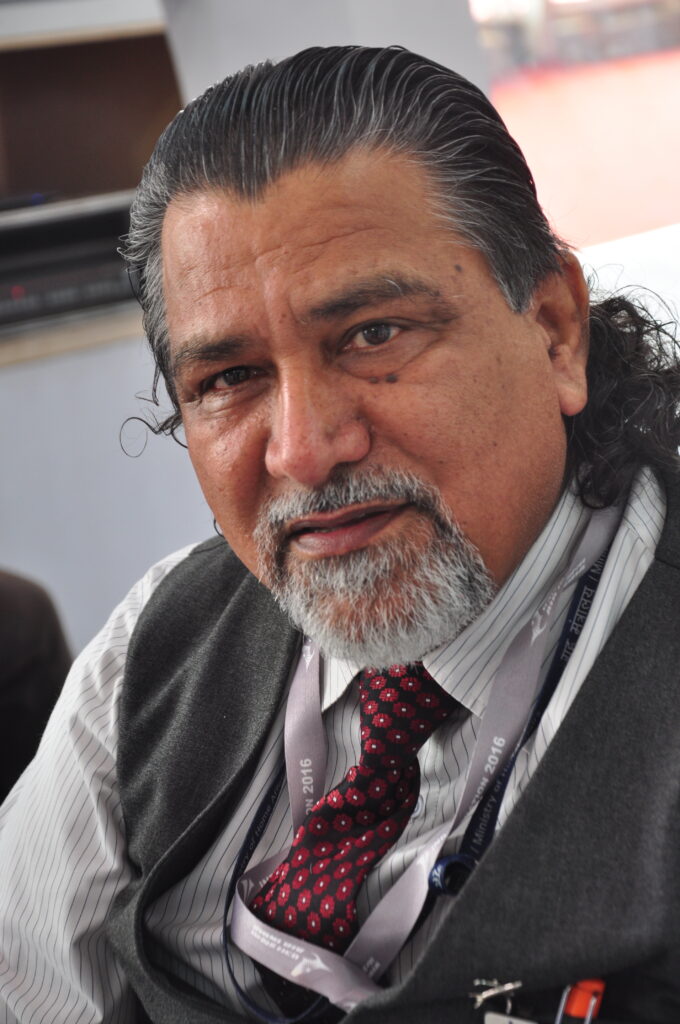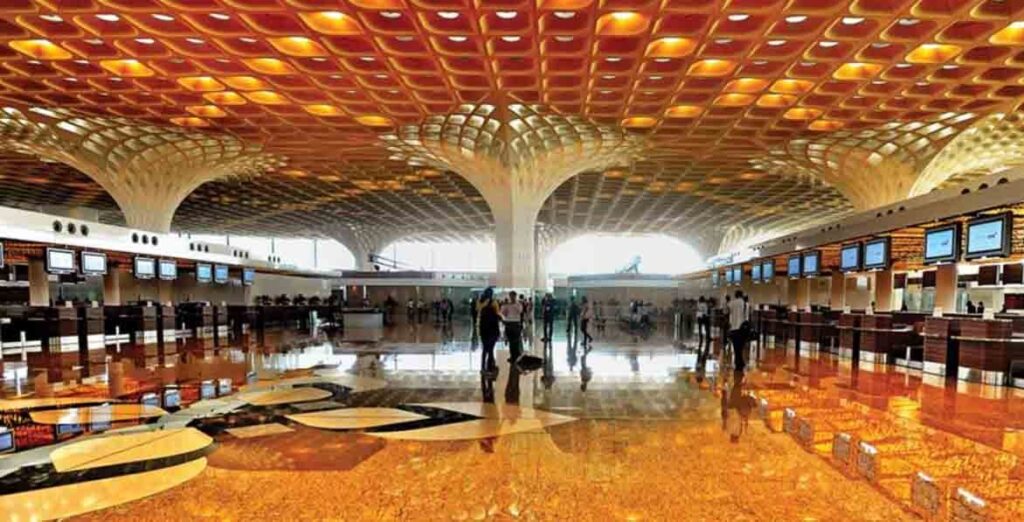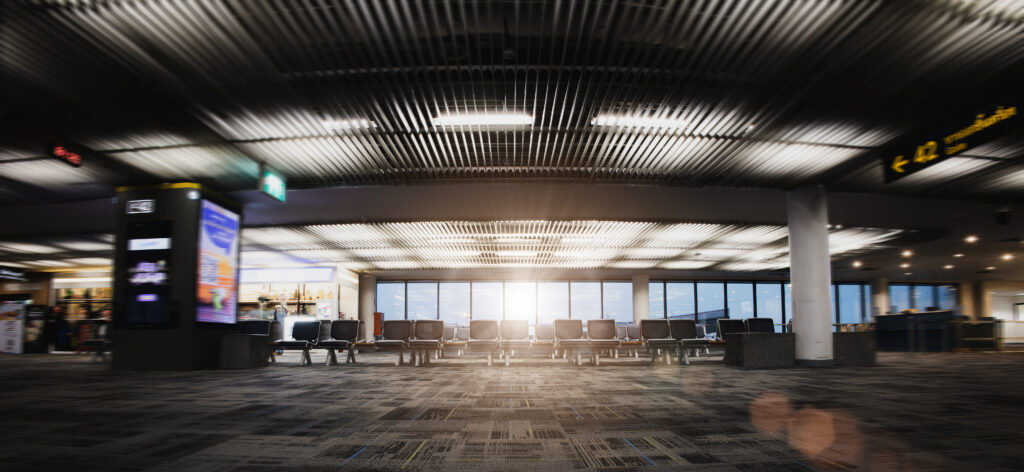By GS Bawa

Big Airports in Asia include names such as Beijing, Dubai, Tokyo, Hong Kong, Shanghai and IGI Airport. Having visited them all, leaving Shanghai, I can visualize the infrastructure and modernization of these airports. Area-wise, Tokyo has the Smallest Airport and Shanghai the Biggest, 0.78 km sq and 16.4 km sq, respectively. Traffic-wise, Hong Kong leads at 71 million p.a. and Dubai leads at 270 plus connections; a point that I wish to draw is that all these airports are known for their respective features and traits to deal with the traffic as per the catchments area and the economic factors and profile of the country they are situated in. Asia has over 900 airports and a majority of them are in India and China. Further, India is a Neighbor’s Envy country, so far as the development of airports is concerned. Two major airports, i.e. Jewar and Navi Mumbai are coming up very fast and thirteen to fifteen other airports spread across the country are in the pipeline. Thus, an increase in connectivity, both on domestic and international canvas is sure. The development of these airports will impact load distribution and relieve some pressure on neighboring countries too as India is aiming for the development of multiple Hub Airports. [Excerpt from an interview with Jyotiraditya Scindia, former Union Minister of Civil Aviation; IA&D:
” Today we have 14.5 crore domestic passengers, and I forecast this number to go upwards of 20 crores, and today we have six crore international passengers. That number is expected to increase by double digits, then it augurs for the creation of an international hub in India, and we are starting with Delhi. We are today in talks with DIAL (Delhi International Airport Limited), Air India and Indigo to make Delhi the first international hub. Once we have done that, we will also coordinate with other related ministries, and get them on board to make that into a reality. However, an international hub in India is in the offing sooner rather than later. Due to the potential, I think that in the next decade, I would like to see not only a single international hub but multiple international hubs in India.”]
Apart from ease of connectivity, i.e. UDAN and RCS schemes of the GoI and the multiplier impact of airports and tourism in employment generation, which 1 is to 10, is pushing the government to adhere to the plans for the development of aviation infrastructure in the country. Within India, States are getting concerned and becoming aware of the regional and local economic benefits of airport development, e.g. states like Jharkhand are looking for four airports for quick development. This has a direct correlation with the real estate development in the state too. As such tier-II and tier-III cities are hyperactive for the development of airports in their respective catchment areas. As a result, every airport that we build shall have, at least, one USP for which it shall be known in the Region, rather than on the world map. Further, the symbiotic relationship between aviation and tourism is no secret, and it has a direct correlation with the development of Road infrastructure, Hotels and Hospitality, etc. and befitting combinations, say offers, shall be evolved to promote the airports in the region. On the technical front, MROs and Training (Pilot Training, Aircraft Engines and Aircraft Maintenance Training) are in the process of shifting from abroad to home, which is a big push for aviation in the country. Further, India has a big brother role in South Asia, as India is the largest country in South Asia, by area. India has the biggest number of airports and has demonstrated positive trends of growth and development and is being looked upon as a leader in the region for airport operations and airport management. Thus, Indian companies with rich aviation backgrounds are fetching more and more orders and deals to develop and manage aviation infrastructure in South Asia. South Asia together has about 570 to 580 airports, a mix of military, Civil, Land and Water ports and about 10 percent are major airports; looking at the business potential, Indian companies shall keep their presence felt in the region at all times.

With this background, I wish to draw the matrix of digital transformation of airports, which is catching fast and no one can afford to miss it, as the buzz is around unique passenger experience and that comes from technology deployed for efficient and effective service to air travellers, thereby winning the trust of passengers, be it airports, airlines or third party stakeholders; passengers shall be served by them all as a ‘Single Entity’.
When we talk about aviation infrastructure and the roadmap, we often miss the logistics part, i.e. Cargo. It has rich potential both for the airlines, airports and end-users; particularly the transportation of perishables is being looked upon as a great challenge. Within India, the target of 10 mmt by 2030 has been there for some time; it is not difficult but the focus is missing.
An additional, upcoming wing of aviation, i.e. Drone(s) shall also be kept in view. Drones are the future; not toys or hobbyists’ possessions, but rather going to be the Desire of the Nation and vital for bilateral relations too. It is already in use from Defence to Agriculture, from Hobby to Commercial Applications; including ‘Flying Taxi(s)’ and Drone Pods for Cargo and Medical Emergencies. This has mandated dedicated planning for the operation and handling of Drones at Airports. Indian Drone Industry has been evolving rapidly along with a surge in startups and innovation. DGCA has formulated the regulations that govern the operation of drones.
The Prime Minister, Shri Narendra Modi, participated in the Sashakt Nari – Viksit Bharat programme and witnessed agricultural drone demonstrations conducted by Namo Drone Didis at the Indian Agricultural Research Institute, Delhi. This, once again, re-affirms the power and attraction of Drones and the commitment to ‘Made in India’.
Looking within the Asia Region, for overall competition and cooperation, Airport Modernization Benchmarks shall be looked upon at airports that have come up recently or are in the process of development, i.e. the upcoming airports. Within Asia, for example, Hong Kong and Beijing Airports came up in 1998 and 1999, respectively; and both demonstrated a paradigm shift in their respective regions and time zones. Both Airports and Airlines are working to provide Unique Passenger Experience while serving the Air Travellers. Why? It is simply for the reason that all are aware that air traffic is set to boom. Let’s look at the local level first, in India, post-elections, the new government is formed, and new ministers have been administered the oath. With this, the pre-election whispers have started getting louder and bolder; yes, I am referring to the Bilaterals, under which the quota for international flying rights is established. Technocrats call it Flying Rights, or Flying Freedoms – 2, 3 …, but I take it as ‘Clamping the Wings’. Both airports and airlines are investing funds, be it buying new aircraft or new Greenfield Airports or state-of-the-art technology at respective service points, by positioning AI and Automation. It is a known fact that foreign carriers have gained an advantage out of the bilaterals, and Hubs have mushroomed all around India. This has happened by stealing the Indian Traffic to offshore destinations and re-distributing to those destinations that the passengers wish to travel to. Indian carriers have ordered new aircraft, 1600 plus; the government is pushing the development of Greenfield Airports, modernization of existing airports and establishment of Hubs in the country. All these are Capital Intensive projects. Aircraft cannot fly empty, and airports cannot survive without passengers; thus fair & just policies are a must, to ensure that investors get a fair rate of return on their investments. New Destinations are evolving, as a strategy these destinations can be considered to be kept free from bilaterals until the destinations are established and become as self-sustainable.

Coming to ‘Happy Passenger Experience’, starts from home and does not complete until the passenger reaches the Destination. ‘AI-Enabled Airports’ for ‘Q-Free Service’; is now a proven technology, it has come to the airports through the R&D units of the developers. It has come with proven benchmarks, and as such, the art of airport infrastructure designing is going for a paradigm shift, and so far, as digital transformation is concerned. It is no more a question of liking or not liking, it has to be there for a seamless transition and sustainability of airports, airlines and the unique passenger experience. The New Workforce has realized its potential, knowing that it makes their jobs easier and more productive. Airports and Airlines are using this to save on staffing, but Self-Service technology is to help the passenger not to save on staff costs. The technology aims to automate repetitive and predictive tasks and free up the employees of stress at desks and make them free to undertake other creative tasks. When I had coined ‘Q-Free Airports’, a few years back, my interest was in achieving the Happy Passenger Scenario, which I have always promoted through the use of better technology and systemic changes. Happy Passenger means Predictable Travel whereby everyone in the chain knows his (Pax.) movement and is ready to serve him in an efficient and effective manner. AI-enabled services help in capturing Real-time data and information, which in turn helps in making quick and reliable decisions. AI as a business, over the next five years, is envisaged to touch US $ 422 bn. The present usage is just one-fourth of the total potential, thus there is great potential. Let us make Air Travel a pleasant and Happy Journey, let airports sell Happiness nothing else and I repeat, Happy Passengers Spend Money at Airports.
High-Tech Technology Lidar Sensors and 5KHD Cameras provide the flow of passengers in a manner that bottlenecks are reduced, and checkpoints are effective in reducing dwell time. Through this writing, my task is not to name a few or many technologies or the vendors who are providing such facilities; it is rather to watch the shift that is happening around and draw the attention of the planners to take advantage of the upcoming trends. I have come across airports where AI has been successfully deployed at Check-in, Security and Baggage Handling, as these are the most critical vantage points for airports. Now the Passenger Flow Forecast, Simulated Flow, etc. are also being added to this list. Like, Delhi, as a city, has the best Metro System; this happened as we missed it in the first phase; similarly, for aviation the time to wait, watch and evaluate is over, we just need to adapt and adapt to the best and implement it on the ground. Sustainable Airports mandate ‘Winning the Trust of Passengers and Sustainability’ through Digital Resources, Airport Retail, Innovative Quality Service, and IOT enabled Cyber Security and Seamless Travel. As automation is increasing, the personal touch is reducing; it shall be the other way round, i.e. efforts saved from automation shall be invested in the Services with Human Touch for the seamless transition of the passengers. Security has an added stress on both the passengers and the service providers, technology is further transforming that into a new culture of machine dominance over humans; here too the human touch needs to be enhanced.

India has become the third-largest domestic aviation market in the world; and people, still, often talk about the status of foreign investment in India. I am sure, with the continuity of government, all speculations come to rest; and I am reminded of the Law of Attraction, which mandates the affirmation of being wealthy, wise, full of abundance of capacity and opportunities; the Indian Civil Aviation shall march forward with this affirmation and shall mark its position on the world map, as Number-One. I, also felt motivated when Prime Minister Narendra Modi stated that India would soon be manufacturing big passenger aircraft. This engraved the Made in India on the minds of entrepreneurs and as a result, Drone manufacturing has already started to show leads in their respective fields. Further, as aviation is in for transformation, the infrastructure creation in India with the core intent of affordability is the selling point to the developing world; we (Indians) are known for value-for-money products, services and solutions. Future airport infrastructure shall not only be affordable, rather shall also be compatible with changing climate-proof benchmarks. The Green Energy, benchmarks and public pressures will compel airports and airlines to adopt and adapt to the change.
In conclusion, to harness the potential of civil aviation activities in general and more specifically in the Asia Region, the Indian companies and organizations need to come together and raise the par to win over the clients. This will require government support and push. As we are kick-starting with the new agenda of the Government, it is the right time to push for it.
Gurmukh Singh Bawa is the former General Manager, Airports Authority of India, Secretary General, the Air Travellers Association and Secretary Public Relations Society, Delhi. Currently, he writes on subjects like Airport Economics, Airport Statistics and Data Collection, Traffic Studies & Surveys and Traffic Forecasting, Commercial Aspects of Airports, Airport Marketing, Airport Non-Aero Enhancement Strategies, Corporate Communication, Organization Image Building, Public Relations, General Management, Motivation, Quality Control, Project Management, Training and Training Methodologies





